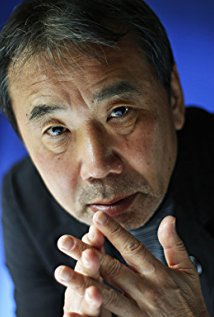Kafka on the Shore Summary
5 min read ⌚
 Every once in a while, we come across a book; we just can’t take our eyes off it.
Every once in a while, we come across a book; we just can’t take our eyes off it.
As much as we want to maintain the spectator’s point of view, this novel really sucks you into the plot and makes you feel like the leading character.
Stick with us, to be introduced to the mind-blowing events of Kafka’s life.
Who Should Read “Kafka on the Shore”? And Why?
Our question would be – Who shouldn’t? If you are fiction lover, and you want to put a finishing touch on your actions, Haruki will show you the way.
In other words, “Kafka on the Shore” is suited for the broader audience. It can be appealing and informative to both teenagers and adults, regardless of any religious and cultural obstacles.
Haruki Murakami Biography
 Haruki Murakami is a renowned Japanese author, whose books have gained international interest and fame.
Haruki Murakami is a renowned Japanese author, whose books have gained international interest and fame.
His bestsellers have been translated into more than 50 languages.
Plot
Often, we find ourselves on the fence about how to define good, bad, evil, pure, etc. Not many people can rise to the occasion, and as a result, characterize these elements.
The fiction storyline of Kafka on the Shore, arouse interest among various groups of people. A young boy, called Kafka Tamura, decides to run away from his home in Tokyo, seeking shelter and harmony on the shores of Takamatsu.
This whole journey was triggered by a curse. Kafka makes up his mind to say goodbye to his old life and embarks on a mission, that will change him forever. It’s worth mentioning that Kafka was abandoned by his mother when he was just four years old.
It’s hard to tell the difference between sea and sky, between voyager and sea. Between reality and the workings of the heart.
At the time, he stayed with his father, who was a sculptor, but prone to violence and mood swings. Kafka will eventually kill his father, and due to the unbearable living conditions, he decides to flee with an intention to start over.
He finds a good hiding place, just near to Takamatsu in private library, where he for the first-time lays eyes on Oshima. This transgender young gay man is the first one who provides support and doesn’t judge Kafka for his actions.
What comes as a shock, that apparently the director or the person in charge of the library is Miss Saeki – his mother.
On the way over to Takamatsu, he meets Sakura in the bus, a hairdresser by profession, who is probably his older sister.
Each narration by Kafka or each chapter acts reciprocally because of the involvement of an old man named Nakata. The life of this mysterious old fellow is somehow brought into line with Kafka’s voyage to Takamatsu.
Not just beautiful, though–the stars are like the trees in the forest, alive and breathing. And they’re watching me.
Same as Kafka, this wise man was also hurt by his close inner circle. Nevertheless, he somehow manages to avoid taking life for granted.
He lives by the motto – the simpler, the better. When he was young, he had a horrible accident, which erased pretty much all his memories from the past.
This twist of fate, however, gave him something extraordinary – the ability to interact with animals, especially to cats. He never bargained for such deal, but that’s how it turned out.
For an old-buddy, he is doing pretty great. Nakata helps local families to locate their missing pets, and by doing so, he compensates for his lack of intellectual sharpness and other skills. One of these searches turns into more than he can handle by himself.
Nakata bumps into evil on this journey and decides to reshape the world, by getting rid of all factors that are adding to its collapse.
In the midst of the conspiracy, a new character emerges – Hoshino. This truck driver willingly assists Nakata on this quest and agrees to help him find the missing link.
Nakata ultimately ends up killing Kafka’s father and plunges into new psychological tendencies. With a troubled mind, he goes to Takamatsu, to find Kafka.
He advocates for a joint effort in order to perform certain rituals and interpret some magical symbols. One of those ceremonies involves opening and closing an entrance stone.
What this does is allowing Kafka and all the other individuals embroiled in the ritual, to gain higher knowledge by exploring both worlds. The idea was to expand their awareness about the real meaning of life and how that affects their decision-making.
The Police suspect Kafka and Nakata’s involvement in the murder of Kafka’s father. They come knocking at their doors only to find empty apartments. Evidently, the police are pretty sure that this teenager and old-man are undoubtedly linked to the crime being committed.
Oshima covers their trails by escorting Kafka in the woods, to hide for the time being, until the situation lies down.
Even there, Kafka is not safe and cannot find peace. In reality, he comes across a variety of challenges in the woods, which made him anxious and restless.
Kafka must choose whether to move on, or find a way to reduce the intensity of the curse laid upon him. In the meantime, both Nakata and Hoshino are hiding somewhere out of town, in a private apartment.
Kafka on the Shore Epilogue
Although Kafka never met Nakata face-to-face, this old-man succeed to succumb to the curse, and prompt Kafka to choose life. Under these circumstances, Nakata dies leaving a legacy of good deeds. In respect to Nakata’s actions, Hoshino completes the ceremony.
Kafka decides to return to his home, which means to deal with the police and all the troubles he left behind.
Like this summary? We’d Like to invite you to download our free 12 min app, for more amazing summaries and audiobooks.
“Kafka on the Shore PDF Quotes”
Memories warm you up from the inside. But they also tear you apart. Share on X It's like Tolstoy said. Happiness is an allegory, unhappiness a story. Share on X Listen up - there's no war that will end all wars. Share on X Every one of us is losing something precious to us. Lost opportunities, lost possibilities, feelings we can never get back again. That’s part of what it means to be alive. Share on X In everybody’s life there’s a point of no return. And in a very few cases, a point where you can’t go forward anymore. And when we reach that point, all we can do is quietly accept the fact. That’s how we survive. Share on XOur Critical Review
You must give credit to the author, for the fantastic fiction storyline, and narration. We felt like we were there on the scene to, this whole time.
On top of that, the whole novel is written mysteriously, and to extract the key points is easier said than done.
We leave you to read this masterpiece and draw your own conclusions.
Emir is the Head of Marketing at 12min. In his spare time, he loves to meditate and play soccer.







